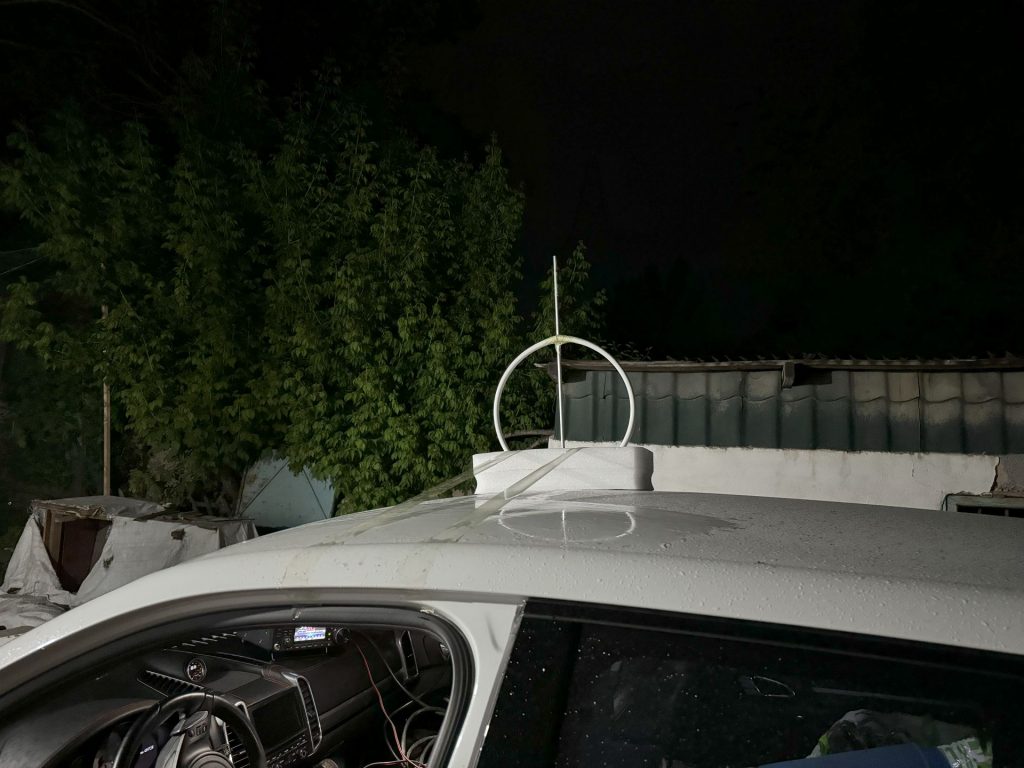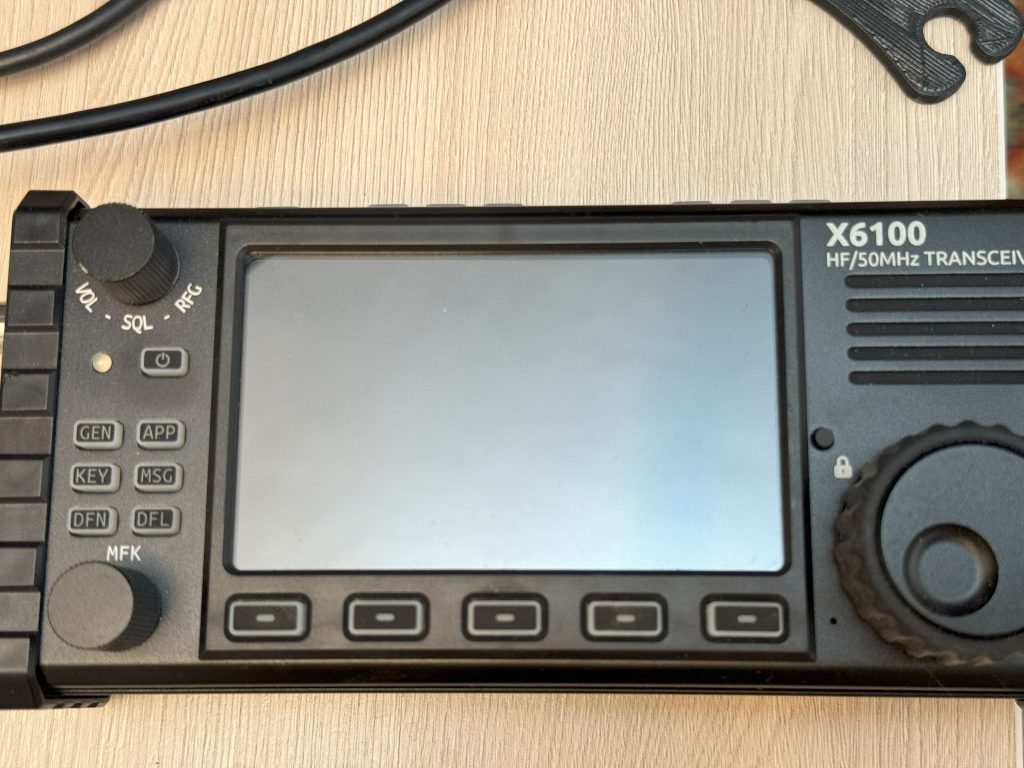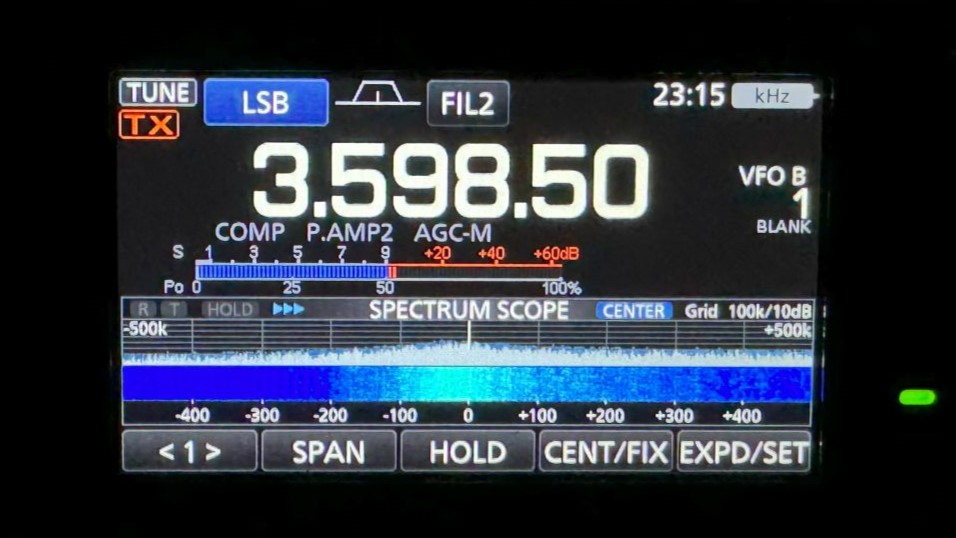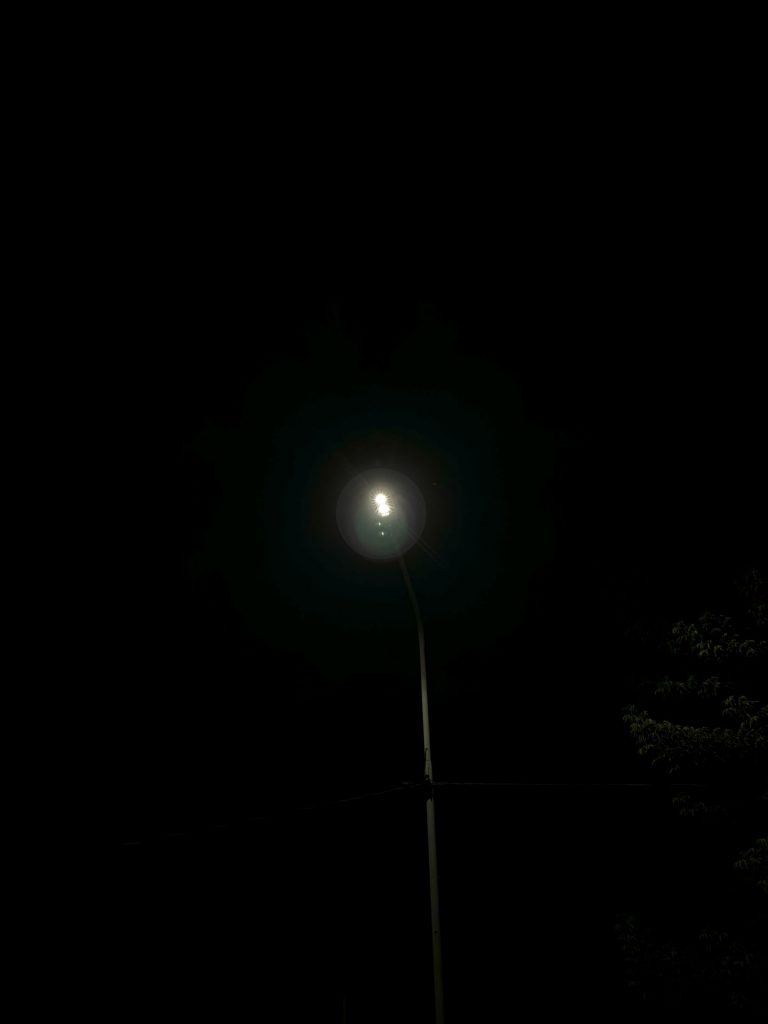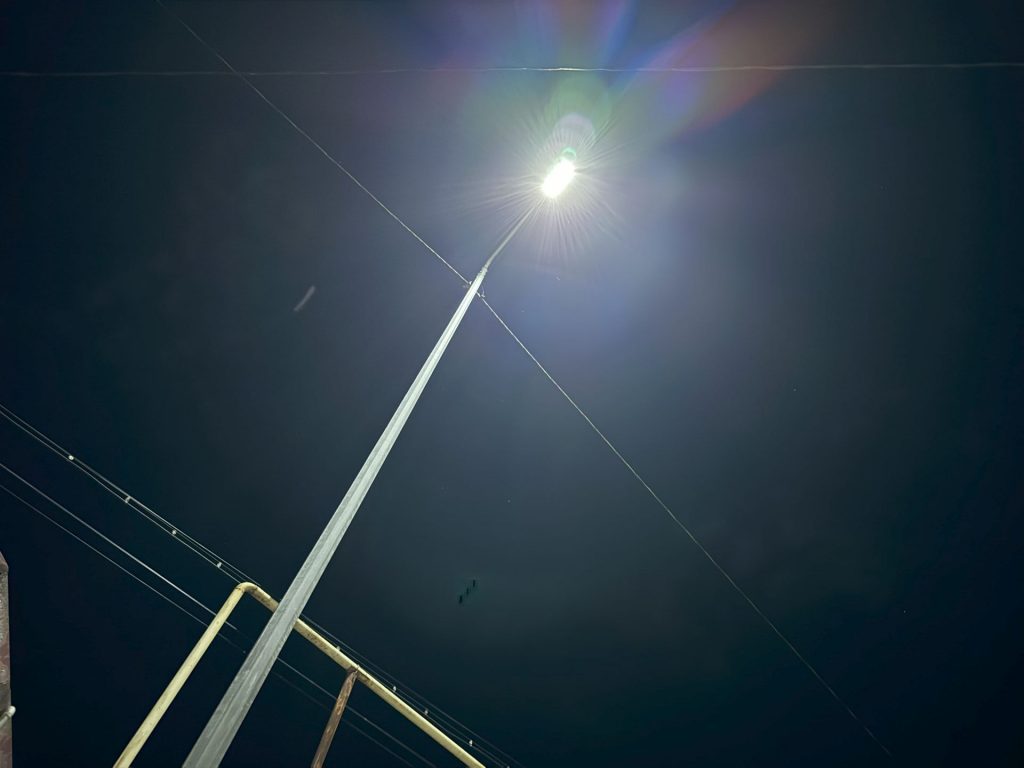Identifying the source of noise
I have been mostly working on higher bands for two main reasons:
- They are not noisy
- High-gain antennas are possible to build in my conditions
The issue in my case was very severe, and I decided to find the sources of the noise
Directional antenna
To try to identify sources of noise, I built a basic directional antenna, tuned it to 3.6 MHz, and drove around the village where I rent a cottage that I use as my ham shack.
There was a clear indication that the noise jumps in the evening. Thus, I thought people return home from work, turn on noisy chargers, and kill the air. That was the first guess. It wasn’t entirely clear how accurately I will able to pinpoint the source of noise and what I shall do after that.
First, the task was to find the sources.
Initial attempts
Before building the roof antenna, I tried to do it with a larger antenna in hands and using a portable transceiver that I purchased earlier for this kind of and similar situations. It didn’t work well:
- The antenna was too big
- The transceiver is nearly a garbage. After Icom 7300, it is completely unusable: internal spurious emissions that receiver receives, very low quality audio, more than questionable user interface, etc. The transceiver looks good and solid in general. But the content is garbage. I can’t say whether it is my sample or the model, but it is a waste of money and time
Drive tests
After some driving, it become pretty clear that the main source of my pain and problems wasn’t chargers from neighbors. Unfortunately, it was lighting – official lighting of the village that polluted the lower bands so heavily. It is very unfortunate since with neighbors I could probably do something but with the municipality – very improbable.
S9+ noise near lamps
Either the lamps themselves or likely poorly done powering of them and filtering emitted terrible wideband noise. Lower bands 160-20 meters are blocked completely for DXing. On 40 and 80 meters the noise is about S9 on vertical 1/4-waver. On 20 meters – about S7 on the Moxon. Everything is 200-400 meters from the lamps.
Since the lamps cover the whole street over 1-2 km of length, it is impossible to reject the noise from even with the back of directional antenna since sources occupies the whole horizon.
Noisy lamps or poor powering & filtering
Noise level a few hundreds of meters away from the lamps
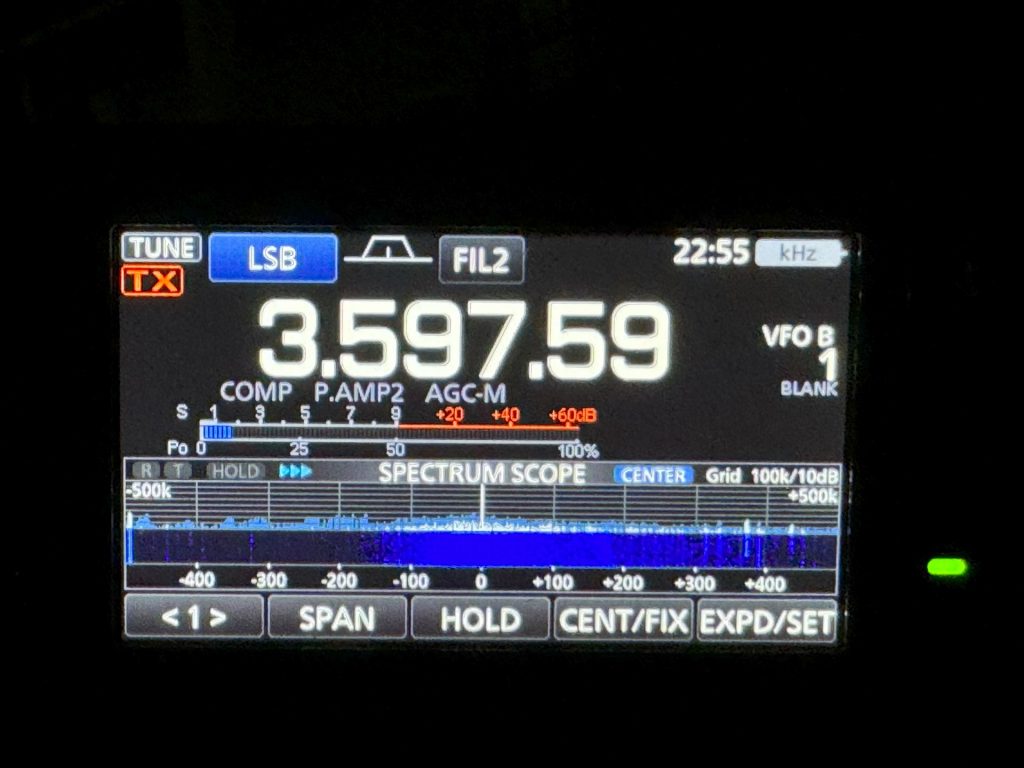
Results
- Turned out that I shall be relatively happy since the lamps are 200-400 meters away. The noise at my location is not as bad as in the lightened-up street or near those lamps
- Likely, the grid works as a distributed antenna. However, during the driving, the most of the noise was directly under the lamps. Between the lamps – 50 meters or so – it dropped a couple of S-levels at least
- Lamps may look similarly but they produce different level of noise. I found similarly looking but not sure that identical lamps lighting a small factory. They were not as noisy as the lamps on the street. Thus, I still suspect that municipal electricians didn’t do proper filtering or powering for those lamps and the problem is rather fixable
- I don’t see an easy solution for my noise problems apart from moving to another location, which is not easy and not desirable for several reasons
- I am sure there are many other smaller or closer sources of noise. But the lamps are killing everything when they are on
Happy end?
Thus, for the time being I am mostly enjoying the upper bands where the issue is not as severe.
Random post
Categories
Tags
| M | T | W | T | F | S | S |
|---|---|---|---|---|---|---|
| 1 | 2 | 3 | 4 | 5 | 6 | 7 |
| 8 | 9 | 10 | 11 | 12 | 13 | 14 |
| 15 | 16 | 17 | 18 | 19 | 20 | 21 |
| 22 | 23 | 24 | 25 | 26 | 27 | 28 |
| 29 | 30 | 31 | ||||

